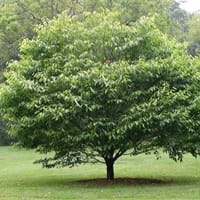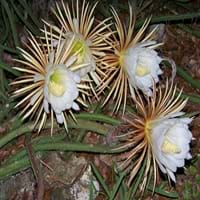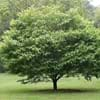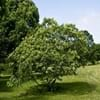Life Span
Perennial
Annual and Perennial
Type
Tree
Cactus or Succulent
Origin
North America, United States, Northeastern United States, Mid-Atlantic United States, Southeastern United States, Central United States, South-Central United States, Texas, Mexico, Europe
Mexico, Caribbean, Central America, South America
Types
Carpinus caroliniana caroliniana, Carpinus caroliniana virginiana
Not avilable
Number of Varieties
Not Available
Habitat
Not Available
Desert
USDA Hardiness Zone
3-9
Not Available
AHS Heat Zone
9-1
Not Available
Sunset Zone
1a, 1b, 2a, 2b, 3a, 3b, 4, 5, 6, 7, 8, 9, 14, 15, 16, 17
Not Available
Minimum Width
Not Available
Flower Color
Yellow, Yellow green
Dark Salmon, Sandy Brown, White, Yellow
Flower Color Modifier
Bicolor
Multi-Color
Leaf Color in Spring
Green, Light Green
Not Available
Leaf Color in Summer
Dark Green
Not Available
Leaf Color in Fall
Yellow, Yellow green, Orange Red
Not Available
Leaf Color in Winter
Not Available
Not Available
Leaf Shape
Pinnate
Succulent
Plant Season
Summer, Fall
Not Available
Sunlight
Full Sun, Partial Sun, Partial shade, Full Shade
Full Sun, Partial shade
Type of Soil
Clay, Loam
Sand
The pH of Soil
Acidic, Neutral
Alkaline, Neutral, Not Available
Soil Drainage
Average
Well drained
Bloom Time
Spring
Early Spring, Early Summer, Late Spring, Late Winter, Mid Spring
Repeat Bloomer
No
Not Available
Tolerances
Wet Site
Drought
Where to Plant?
Ground
Container, Ground, Pot
How to Plant?
Not Available
Grafting, Seedlings
Plant Maintenance
Medium
Medium
Watering Requirements
Requires regular watering
Average Water Needs
In Summer
Lots of watering
Lots of watering
In Spring
Moderate
Moderate
In Winter
Average Water
Average Water
Soil pH
Acidic, Neutral
Not Available
Soil Type
Clay, Loam
Not Available
Soil Drainage Capacity
Average
Not Available
Sun Exposure
Full Sun, Partial Sun, Partial shade, Full Shade
Not Available
Pruning
Requires very little pruning
Not Available
Fertilizers
All-Purpose Liquid Fertilizer
All-Purpose Liquid Fertilizer
Pests and Diseases
Canker, fungus
Not Available
Plant Tolerance
Wet Site
Drought
Flower Petal Number
Not Available
Semi-Double
Fragrant Leaf
Not Available
Not Available
Foliage Texture
Medium
Bold
Foliage Sheen
Glossy
Not Available
Attracts
Not Available
Not Available
Allergy
Not Available
Itchiness
Aesthetic Uses
Showy Purposes, small hedge
Hanging Basket, Showy Purposes
Beauty Benefits
Good for the Scalp, Stops hair loss
Not Available
Environmental Uses
Air purification
Not Available
Medicinal Uses
Anxiety, Bleeding, Cold, Cough, Cuts, Eye Infection, Fatigue, Fights Depression, Insomnia, Menstrual Disorders, Wounds
Not Available
Part of Plant Used
Whole plant
Fruits, Nut
Other Uses
Used as firewood, Used as Ornamental plant, Used for its medicinal properties, Used for woodware
Used As Food, Used as Ornamental plant, Used for Landscaping
Used As Indoor Plant
No
Yes
Used As Outdoor Plant
Yes
Yes
Garden Design
Hedges, Screening / Wind Break, Shade Trees, Street Trees
Container, Houseplant, Lawns and Turf, Mixed Border, Not Available, Tropical
Botanical Name
CARPINUS caroliniana
Selenicereus pteranthus
Common Name
American Hornbeam, Musclewood, blue-beech, Ironwood
Selenicereus, Moonlight cactus
In Hindi
अमेरिकी हानबीन
moonlight cactus
In German
Amerikanische Hainbuche
Selenicereus
In French
Charme de Caroline
Selenicereus
In Spanish
Carpinus caroliniana
Selenicereus
In Greek
american γαύρο
Selenicereus
In Portuguese
Carpinus caroliniana
Selenicereus
In Polish
Grab amerykański
Selenicereus
In Latin
american hornbeam
moonlight cactus
Phylum
Magnoliophyta
Tracheophyta
Class
Magnoliopsida
Magnoliopsida
Order
Fagales
Caryophyllales
Family
Betulaceae
Cactaceae
Genus
Carpinus
Selenicereus
Clade
Angiosperms, Eudicots, Rosids
Angiosperms, Core eudicots, Eudicots
Tribe
Not Available
Hylocereeae
Subfamily
Not Available
Cactoideae
Number of Species
Not Available
Season and Care of American Hornbeam and Moonlight cactus
Season and care of American Hornbeam and Moonlight cactus is important to know. While considering everything about American Hornbeam and Moonlight cactus Care, growing season is an essential factor. American Hornbeam season is Summer and Fall and Moonlight cactus season is Summer and Fall. The type of soil for American Hornbeam is Clay, Loam and for Moonlight cactus is Sand while the PH of soil for American Hornbeam is Acidic, Neutral and for Moonlight cactus is Alkaline, Neutral, Not Available.
American Hornbeam and Moonlight cactus Physical Information
American Hornbeam and Moonlight cactus physical information is very important for comparison. American Hornbeam height is 610.00 cm and width 1,070.00 cm whereas Moonlight cactus height is 30.00 cm and width Not Available. The color specification of American Hornbeam and Moonlight cactus are as follows:
American Hornbeam flower color: Yellow and Yellow green
American Hornbeam leaf color: Green and Light Green
Moonlight cactus flower color: Dark Salmon, Sandy Brown, White and Yellow
- Moonlight cactus leaf color: Not Available
Care of American Hornbeam and Moonlight cactus
Care of American Hornbeam and Moonlight cactus include pruning, fertilizers, watering etc. American Hornbeam pruning is done Requires very little pruning and Moonlight cactus pruning is done Not Available. In summer American Hornbeam needs Lots of watering and in winter, it needs Average Water. Whereas, in summer Moonlight cactus needs Lots of watering and in winter, it needs Average Water.





